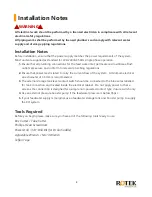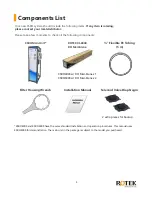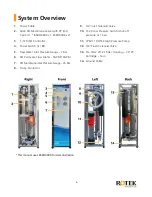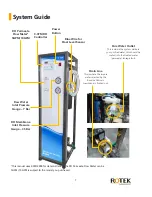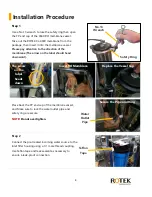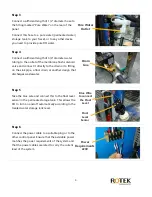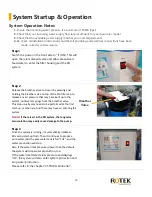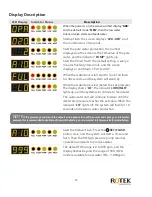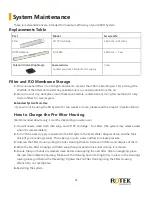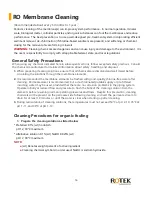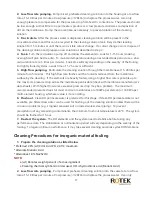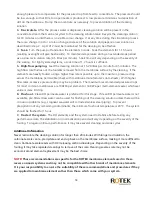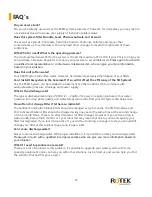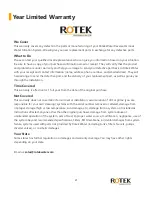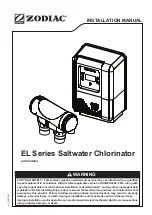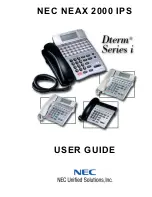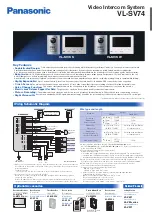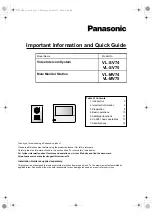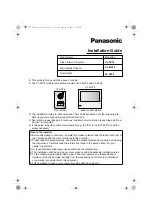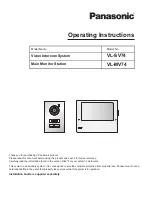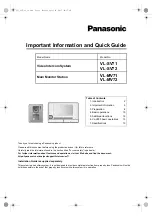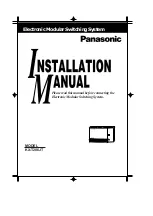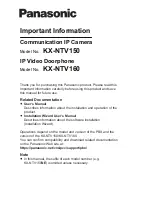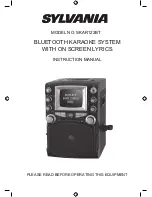
18
enough pressure to compensate for the pressure drop from feed to concentrate. The pressure should
be low enough so that little to no permeate is produced. A low pressure minimizes re-deposition of
dirt on the membrane. Dump the concentrate, as necessary, to prevent dilution of the cleaning
solution.
3.
Re-circulate. After the process water is displaced, cleaning solution will be present in the
concentrate stream that can be recycled to the cleaning solution tank. Recycle the cleaning solution
for 10 minutes or until there is no visible colour change. If at any time during the circulation process
there is a change in pH or a colour change, dispose of the solution and prepare a new solution as
described in step 2. A pH of 2 must be maintained for the cleaning to be effective.
4.
Soak. Turn the pump off and allow the elements to soak. Soak the elements for 1-15 hours
(soaking overnight will give best results). To maintain temperature during an extended soak period,
use a slow recirculation rate (2-5 litres per minute). Soak time will vary depending on the severity of
the scaling. For lightly scaled systems, a soak time of 1-2 hours is sufficient.
5.
High-flow pumping. Feed the cleaning solution at 15-20 litres per minute for 45 minutes. The
high flow rate flushes out the foulants removed from the membrane surface by the cleaning. If the
elements are heavily fouled, using a higher flow rate is possible up to the maximum pressure drop
across the membrane permissible (check with membrane manufacturer’s data sheets). With higher
flow rates, excessive pressure drop may be a problem. The maximum recommended pressure drops
for most common membranes are 100kPa per element or 340 kPa per multi-element vessel, whichever
value is more limiting.
6.
Flush out. Clean RO permeate water is preferred for this stage. If clean RO permeate water is not
available, pre-filtered raw water can be used for flushing out the cleaning solution unless there will be
corrosion problems (e.g., stagnant seawater will corrode stainless steel piping). To prevent
precipitation of any remaining contaminants, the minimum flush out temperature is 20°C. The system
should be flushed for 1 hour
7.
Re-start the system. The RO elements and the system need to stabilize before taking any
performance data. The stabilization or normalisation period will vary depending on the severity of the
fouling. To regain optimum performance, it may take several cleaning and soak cycles.
Additional Information
Never recirculate the cleaning solution for longer than 20 minutes. With longer recirculation, the
carbonate scale can re-precipitate and end up back on the membrane surface, making it more difficult to
clean. Carbonate scale reacts with HCl releasing carbon dioxide gas. Depending on the severity of the
fouling, it may take repeated cleanings to remove all the scale. Cleaning severe scale may not be
economical and element replacement may be the best choice.
NOTE!
These recommendations are specific for the ROTEK membrane elements used in these
reverse osmosis systems and may not be compatible with other brands of membrane elements.
It is your responsibility to ensure the suitability of these recommendations and procedures if they
are applied to membrane elements other than those which come with your system.

